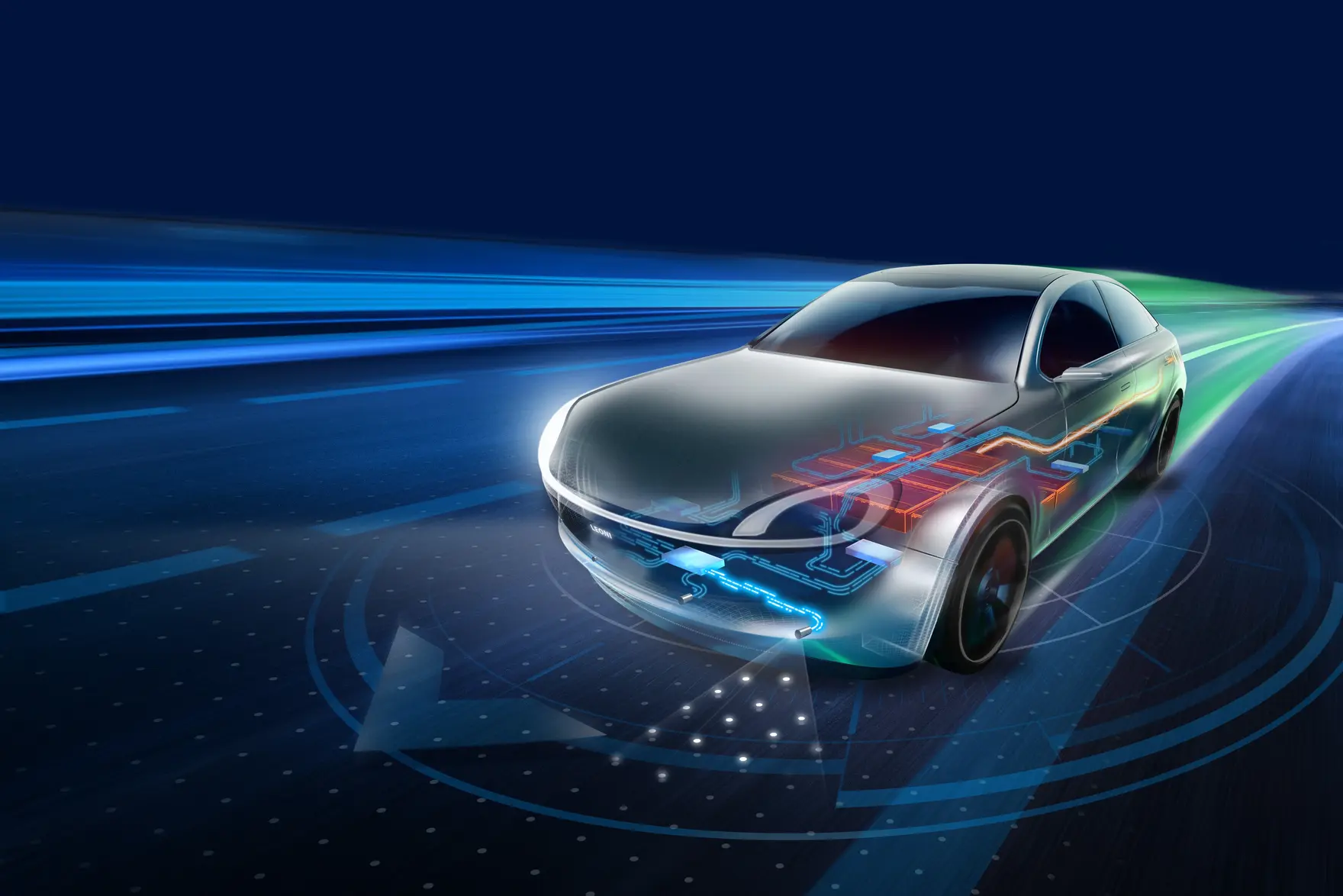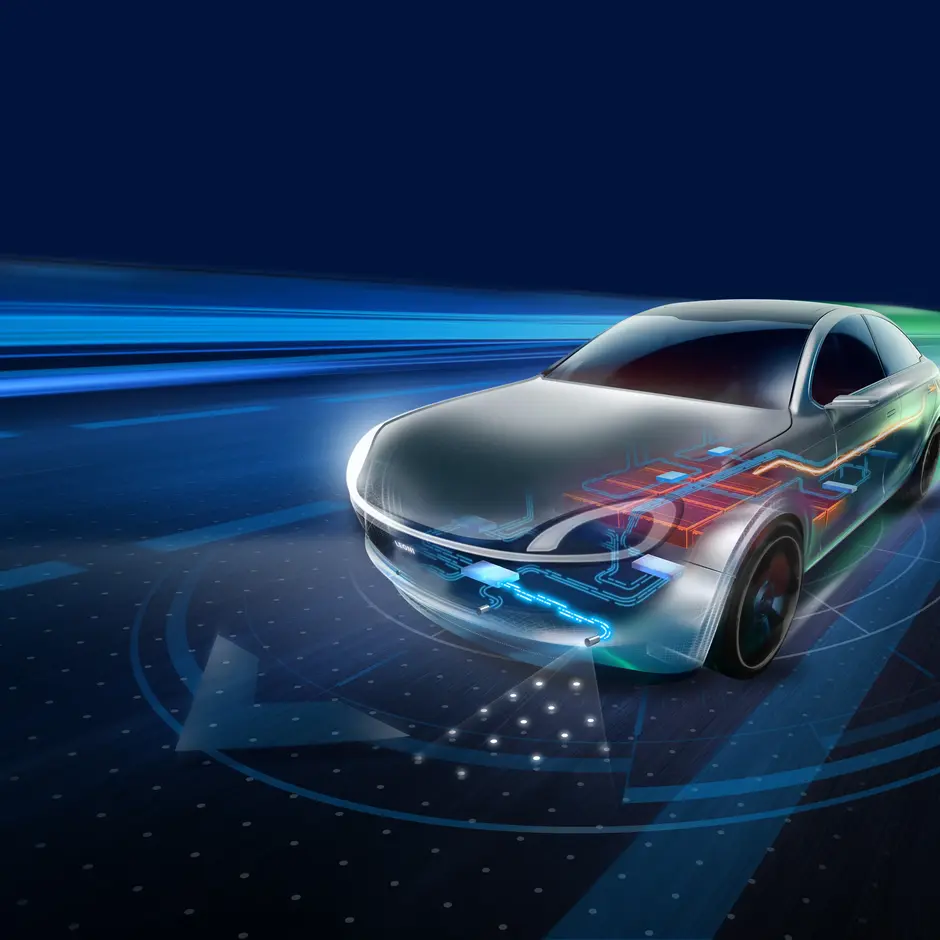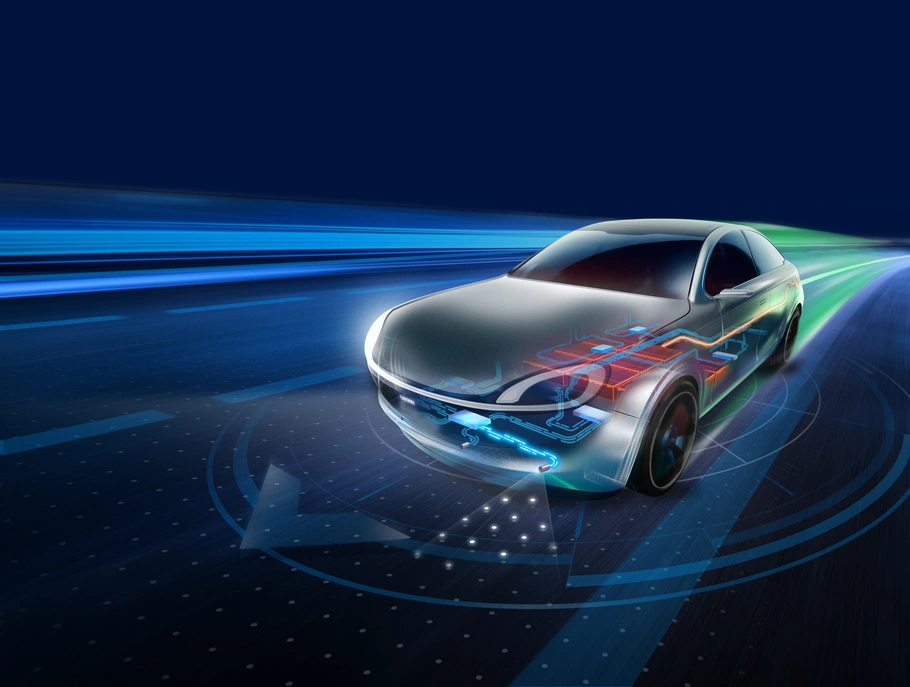Kitzingen, 7 July 2023 – Wiring systems are facing disruptive changes: high-performance computers and a clear structure are preparing them for automated driving, digitalization, and more. Leoni's zonal architectures enable automotive manufacturers to reduce the total cost of ownership (TCO) of wiring systems, and to reorganize production processes and supply chains to make them more sustainable.
Automotive manufacturers are currently facing many challenges, such as connectivity, automated driving, electrification of the powertrain, digitalization, and CO2 minimization. These challenges are subjecting wiring systems to higher safety requirements, multiple voltage levels, and greater power requirements, as well as the need for additional sensors, actuators, data traffic, and processor capacity. In some cases, current customer-specific wiring systems have more than 100 control units and more than 1000 individual lines, and the trend is rising. "This means we are slowly reaching the limits of what can be reasonably handled in manufacturing and final assembly", says Ingo Spengler, Leoni COO and board member. “Let's face it: we cannot continue as before. We have to rethink the wiring system.”
Clear concept, clear benefits
In Leoni’s view, future electrical and electronic architectures will have a small number of central computers connected by high-performance “data highways”. Surrounding the high-performance computers, the wiring system will be divided into several zones. In these zones, a zone controller will independently perform sub-tasks such as power distribution or data management to and from the sensors and actuators. The first zonal architectures of this type will go into serial production within the next few years (“zonal approach 1.0”). For instance, Leoni has currently received its first customer order. The globally active automotive manufacturer and Leoni have jointly designed the wiring system to allow the automated manufacture of sub-harnesses. Leoni believes that the number of zones and zone computers could gradually increase towards the end of this decade. This would be associated with further standardization of power distribution and interfaces, as well as even more consistent software-supported functionality (“zonal approach 2.0”).
A well-structured zonal architecture offers many benefits. The most obvious are new possibilities for production processes and the supply chain. The smaller the cable harnesses in the individual architectural zones, the more likely it is that they can be manufactured in a partially or fully automated process – including the integration of connectors, controllers, or mounting elements. Leoni is already developing intelligent concepts and systems for the production of small, and later larger, cable harnesses.
Flexible production and supply chains
Partially or fully automated production of sub-harnesses, for example, facilitates the change from a customer-specific to a product-specific production strategy. Up to now, Leoni has generally produced a customer-specific wiring harness in a specific plant. In the future, the company plans to manufacture sub-harnesses of a similar structure, such as for bumpers, for different customers’ vehicles together in one plant. This will make it easier to compensate for fluctuations in capacity utilization, while the significantly higher level of automation in the future will considerably improve the manufacturing quality and traceability of all production processes.
Another effect of greater automation is to decrease the relative importance of labor costs. This makes it possible to once again move wiring harness production sites closer to OEM vehicle assembly plants, which reduces distances and thus transport costs, and also lowers the carbon footprint of logistics and the wiring system. Moving wiring system production closer to OEMs can also minimize geopolitical risk factors and strengthen the resilience of supply chains.
Zonal architectures also provide greater freedom in OEM vehicle assembly. For example, a sub-harness can be installed separately in a vehicle module off the main line or externally at a Tier 1 supplier. This module is then ”married” to the rest of the vehicle. OEMs are already considering the possibility of manufacturing entire large vehicle modules – such as the front end, back end, or skateboard – separately (including the sub-harness) and then joining them together in a final assembly line to form the complete automobile. In this process, the sub-harness can be easily and securely connected to the main harness with defined and robust interfaces. Wiring system functionality testing and software flashing could also be performed in the module at an earlier stage, rather than at the end of the line.
Standards and efficiency for lower costs
The second major benefit of zonal architectures is that of potential savings in total cost of ownership (TCO). Automation allows processes, components, and interfaces to be extensively standardized. For example, Leoni is already working on an operating system that will collect, standardize, and consolidate best practices in order to create a standardized approach at all Leoni sites. Together with uniform cables, connectors, processors, and hardware/software interfaces, this will permit time and cost optimization both in wiring harness production at Leoni and in final vehicle assembly at the OEM. For example, it will allow a more effective balance in the conflict of objectives between unit costs and assembly costs. Working closely with the OEM, Leoni can develop an intelligently designed wiring harness that compensates for any higher unit costs in production through automated and thus lower-priced assembly at the customer's plant.
Another advantage offered by the zonal approach is modularity. “Even in the development phase, the unavoidable short-term changes can be integrated more easily and thus more quickly into the overall architecture,” emphasizes Walter Glück, CTO of Leoni's WSD Wiring Systems Division. “The same applies to model maintenance measures and ongoing development of the wiring system architecture in the event of a model change.”
A sustainable solution
The third major benefit is the increased sustainability of a zonal architecture. Current custom wiring harnesses are large, bulky, and heavy. Initial analyses from current projects (zonal approach 1.0) show that the total weight of a zonal architecture could be lowered by about 10%. With zonal approach 2.0, the mass could decrease by even 20% to 30% compared to today's customized cable harnesses.
Weight can also be reduced thanks to the much more manageable packaging of sub-harnesses, as compared to a bulky, heavy customer-specific harness. Together with the geographically optimized supply chain, zonal architectures offer the potential of comprehensively reducing the CO2 footprint of wiring harnesses, which in turn effectively supports the sustainability efforts of OEMs.
With these and other realistic product and manufacturing ideas, Leoni will be expanding its position as a favored wiring system partner. Leoni already offers customer-specific wiring systems production and development services. At the same time, Leoni is expanding its portfolio of innovative hardware components, including power distributors, innovative busbars, and zone controllers. As part of the extensive digitalization of its development and production processes, Leoni plans to continue working with customers to achieve sustainable solutions even more precisely, quickly, and flexibly.
Zonal architectures provide new supply chain & production opportunities, lower total cost of ownership for OEMs and increased sustainability in the wiring system of the future.
Press contact
Gregor le Claire
Corporate Press Officer


